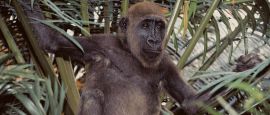Cameroon History, Language and Culture
History of Cameroon
In the first century, the Sao people settled around Lake Chad and it is from them that much of the country's remarkable sculpture originates.
Present-day Cameroon was at the heartland of an area that extended into Nigeria, under the control of the Duala people. An estimated 200 distinct ethnic groups live in the region, the largest of which is the Bamileke, a tribe occupying the west and centre of the country.
Equatorial Bantu live in the area between the Congo basin and the plateaux of the interior, while small hunting bands of pygmies dwell in the remote southern forests.
The Portuguese arrived in the 15th century; later, in the 1880s, the area became a German protectorate. But after Germany's defeat in World War 1, Cameroon was divided between Britain and France.
French Cameroon achieved independence in 1957, under the control of the principal pro-independence party, the Union Nationale Camerounaise (UNC). In 1961, the northern provinces voted to become part of Nigeria, while the south opted for union with French Cameroon. A centralised political and administrative system was introduced with the veteran northern politician, Ahmadou Ahidjo, as President.
In 1975, Paul Biya became Prime Minister and when Ahidjo stepped down in 1982, he was succeeded by Biya who as head of the UNC and its successor party, the Rassemblement Démocratique du Peuple Camerounais (RDPC), Biya has since achieved complete political domination over Cameroon.
In recent years Cameroon’s English-speaking territories have become increasingly isolated from Biya’s government with some politicians from these regions calling for greater devolution, even secession. However, the country is generally quite stable in social and political terms, allowing the development of infrastructure and industry.
Cameroon joined the Commonwealth in 1995 and the UN Security Council in 2002, as one of three African representatives (with Angola and Guinea). It is also a member of la Francophonie. Its record on human rights is considered flawed but has been generally improving.
Did you know?
The two most popular types of music in Cameroon are makossa, a blend of highlife, soul, folk and Congo music; and bikutsi, the dance music of the Ewondo people heard of Paul Simon’s 1990 album, The Rhythm of the Saints.
Although French and English are the official languages, Cameroon his home to some 1738 language groups.
in May 2014, following the Chibok schoolgirl kidnapping, Cameroon joined Chad in declaring war on the Boko Haram and deployed troops on the border with Nigeria.
Language in Cameroon
The official languages are French and English. They are given equal importance in the constitution, but French is the more commonly spoken. Pidgin English is widely spoken, particularly in coastal areas, and Spanish is spoken in some urban centres. More than 200 different African languages are also spoken in the country.




 You know where
You know where